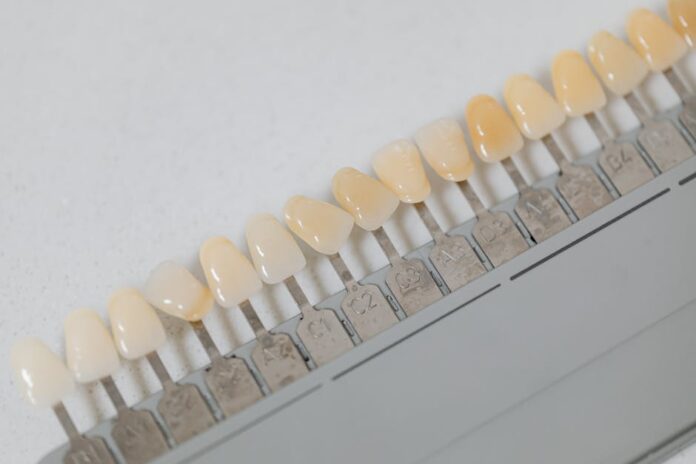The arena of orthodontics has become a focal point for legal scrutinies, especially concerning Invisalign, a product manufactured by Align Technology. These lawsuits uncover significant controversies involving competitive practices, trademark misuse, and market dominance. Various lawsuits now challenge Invisalign’s operations, and each case unravels a narrative of disputes that could reshape the orthodontic industry. As we explore these complex legal challenges, you’ll gain a comprehensive understanding of the situation surrounding Invisalign and Align Technology.
Is There a Lawsuit Against Invisalign?
Yes, there are multiple lawsuits against Invisalign and its parent company, Align Technology. Each lawsuit presents its unique angle and raises questions about business ethics, competition, and consumer rights in the orthodontic market. These legal actions span allegations of anticompetitive behavior, trademark misuse, and deceptive marketing practices. The lawsuits highlight the intricate web of legal challenges besieging one of the most well-known names in clear aligner technology. As consumers and stakeholders anticipate the outcomes, each lawsuit’s trajectory is closely monitored.
What is the Invisalign Lawsuit About?
The Invisalign lawsuits revolve around several allegations. Firstly, Align Technology is embroiled in litigation against Dr. William Dischinger and Dischinger Orthodontics. The lawsuit accuses them of using Invisalign’s trademarks deceitfully to promote a rival product, Spark aligners. Such actions purportedly mislead patients, thinking they receive Invisalign treatment.
Secondly, a class action lawsuit targets Align’s alleged monopolistic practices. It accuses Align of stifling competition by terminating an agreement with 3Shape Trios scanners, thereby maintaining its market hold. Lastly, the company faced allegations of collusion with SmileDirectClub to divide the market, which culminated in a substantial settlement. These lawsuits underscore broader concerns about Align’s operational ethics and market positioning strategies.
Invisalign Overview
Invisalign, developed by Align Technology, revolutionized the orthodontic industry with its clear aligner technology. Offering an alternative to traditional braces, Invisalign aligners appeal due to their aesthetic and removable nature. The product’s innovation quickly led to its widespread acceptance, elevating Align Technology as a leader in orthodontics.
Invisalign aligners primarily cater to individuals seeking orthodontic treatment that is less intrusive and more convenient. They have become a go-to option for many dental practices, celebrated for their design and effectiveness in correcting teeth alignment. Understanding Invisalign’s market success helps contextualize the stakes involved in the ongoing legal battles.
Legal Proceedings and Current Status
The litigation involving Align Technology unfolds across different jurisdictions, each with specific timelines and legal maneuvers. In the case against Dr. William Dischinger, Align seeks over $28 million in damages, demanding compensation for trademark misuse. The lawsuit illustrates Align’s efforts to protect its brand identity and market share amid rising competition.
On another front, the class action lawsuit filed by City Smiles and VIP Dental Spas accuses Align of monopolistic practices. Set to proceed in the U.S. District Court for the Northern District of California, this trial is poised to commence in May 2024. Meanwhile, Align settled the antitrust lawsuit with SmileDirectClub for $27.5 million, illustrating its intention to avoid prolonged litigation costs.
Who Filed the Lawsuit?
Various entities have brought lawsuits against Align Technology. In the case of trademark misuse, Align Technology itself is the plaintiff, taking legal action against Dr. William Dischinger and his practice. For the class action lawsuit claiming anticompetitive behavior, the plaintiffs are City Smiles and VIP Dental Spas, representing a broader class of purchasers who allege financial harm due to Align’s business practices.
Moreover, the settlement with SmileDirectClub was reached following claims from a large class of consumers. The diverse nature of these plaintiffs signifies a wide array of grievances complexly intertwined with Align’s business strategies.
Impact on Invisalign
The swift flow of legal developments exerts significant pressure on Align Technology, potentially influencing Invisalign’s market perception. The accusations complicate its relations with dental practices and partners, as stakeholders reassess their affiliations. For consumers, these lawsuits could sow uncertainty regarding pricing, availability, and the ethical standards of market leaders.
Moreover, Align’s image as a pioneering business comes under scrutiny, compelling the company to rigorously defend its practices. The outcomes of these lawsuits could notably impact Align’s strategy, its competitive positioning, and its reputation within orthodontics.
What Will Happen Next?
As these lawsuits progress, stakeholders and observers anticipate numerous outcomes that can reshape the orthodontic industry landscape. Should Align Technology prevail in defending against these claims, it might reinforce its strategies by further tightening its grip on intellectual property and market practices.
Conversely, if adverse judgments occur, Align may need to reconsider its competitive strategies and attenuate its market dominance. Additionally, the anticipated trial involving the class action lawsuit in 2024 could unravel new precedents concerning regulatory standards and market practices. Whichever way the legal scales tip, these proceedings promise to be pivotal for the future dynamics of clear aligners.
Conclusion
The ongoing lawsuits against Align Technology present intriguing narratives of business ethics and competition in orthodontics. The legal challenges against Invisalign embody pivotal questions about transparency, market control, and consumer rights. From trademark disputes to allegations of antitrust behavior, these cases capture substantial attention.
As Align Technology continues to navigate this complex legal terrain, outcomes of these cases could hold far-reaching implications for the company and the orthodontic industry. As developments unfold, staying informed is crucial for understanding the evolving dynamics within the market. For further insights into the orthodontics industry’s future, stay updated by visiting Six Figure Journal.


